Data analyzed from the NICER telescope aboard the ISS contains evidence of X-ray boosts accompanying radio burst detections, releasing more energy than expected as “giant radio pulses”. Plus, machine learning, intraterrestrial life, all the volcanoes, and updates on SN15 and Ingenuity.
Media
Transcript
Hello and welcome to the Daily Space. I am your host Dr. Pamela Gay.
And I am your host Beth Johnson.
And we are here to put science in your brain.
This has been a weird news week; as the worlds turn, things we expected like the flight of Mars helicopter Ingenuity have been delayed to next week, and things like the flight of SN15 have raced into next week. Meanwhile, we’re seeing the standard mid-semester slow down in new science, and I feel like everyone on our writing staff has a touch of spring fever. It is that week.
As much as we may be struggling to find news beyond “hey, all the flowers are in bloom”, there are still a lot of new results, good and terrifying, coming out. As a resident of California, I want to remind everyone living in and passing through the dry western states in the U.S. that we are facing the driest year for plants in… well…. This is a new kind of bad. The moisture content in the plants and soil is so low we are at risk of facing a fire season like no other. Folks, be careful. We here at the Daily Space want to see humans unharmed, and we don’t ever again want to sit vigil waiting to see if observatories will burn. To quote Smokey the Bear: Only you can prevent forest fires.
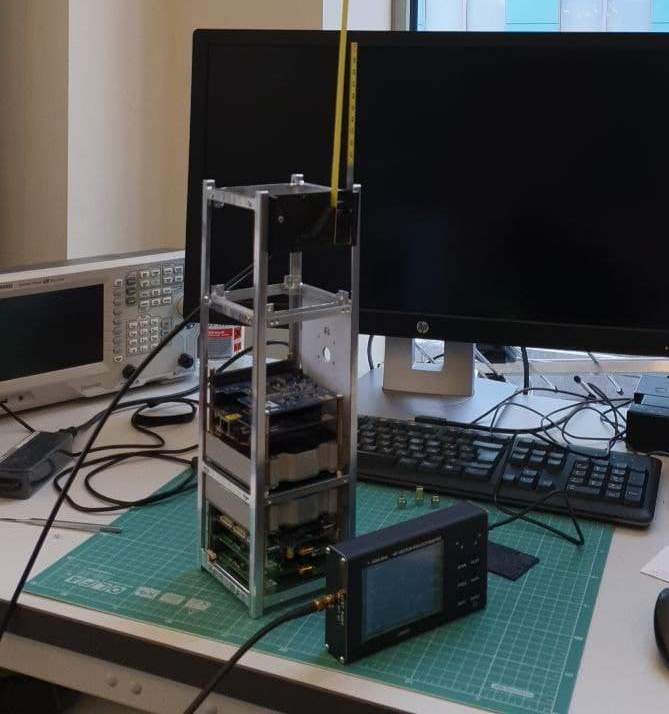
As our technologies advance, teams are looking at how we can use artificial intelligence and robotics to solve complex problems that might otherwise endanger human lives. While I have to admit to being a bit disturbed by swarming cooperative robots on Earth, I’m intrigued by new research showing that nanosatellites can be programmed to work together. Specifically, the Skoltech Space Center’s Nanosatellites Swarm project has enabled their tiny satellites to measure the Earth’s geomagnetic field and pass that information along to other nanosats.
Since the geomagnetic field can affect navigation, this information, shared across a constellation of satellites, allows the leading craft to warn their swarm-mates so they can compensate in real-time. According to a press release on this research: The new method can be used to build large constellations at a lower total cost by using less expensive sensors.
This is super cool work, and while part of my brain is wondering, “Is this how we get Cylons? This feels like how we get Cylons,” I have to admit I’m in favor of lowering the cost of the satellites we need for our modern lives.
I don’t want Cylons. Folks, please be careful with just how autonomous you make your machines. Please?
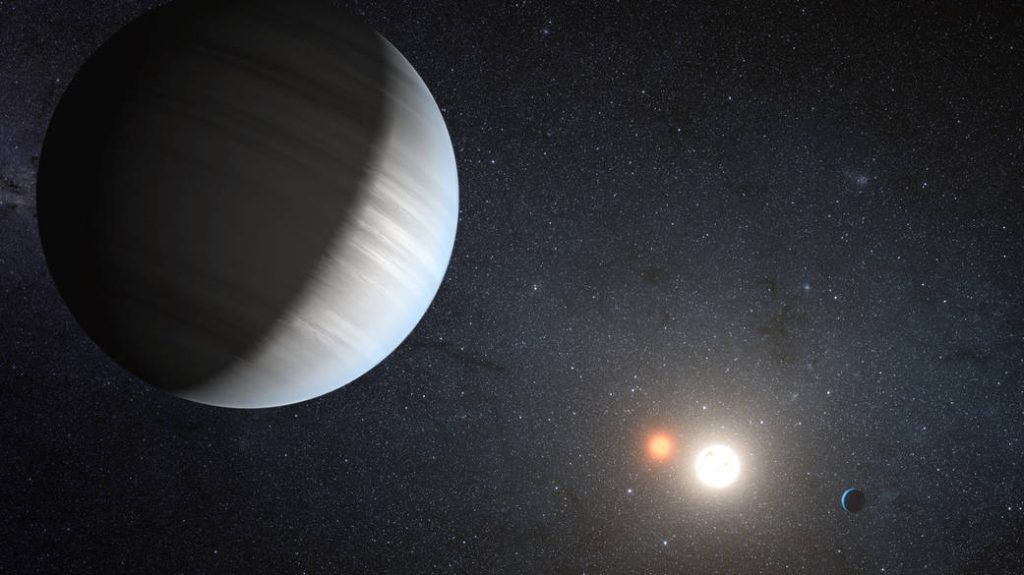
It’s days like today that are particularly good for imagining skipping off this planet to find a better one. And it appears that more and more places aren’t just capable of having planets but are capable of having habitable planets. New research, published in Frontiers in Astronomy and Space Sciences with corresponding author Dr. Nikolaos Georgakarakos, describes five binary star systems capable of supporting habitable planets. Basically, if you want to watch two suns rise, these are the places you place a planet. According to Georgakarakos: Life is far most likely to evolve on planets located within their system’s Habitable Zone, just like Earth. Here we investigate whether a Habitable Zone exists within nine known systems with two or more stars orbited by giant planets. We show for the first time that Kepler-34, -35, -64, -413, and especially Kepler-38 are suitable for hosting Earth-like worlds with oceans.
These worlds haven’t been detected, yet. Small worlds are hard to find and larger orbits just add time to the problem, but these are places to look where we know planets in other orbits exist. So yes, Tatooine may be totally out there, or at least its double sunset over a desert may be something we can one day see.
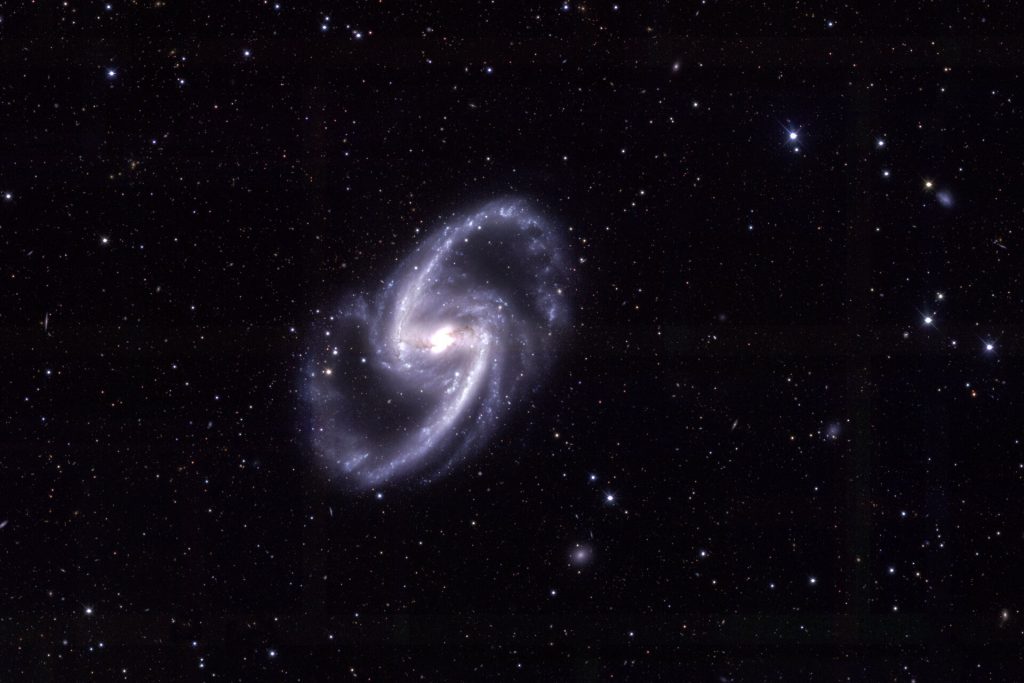
Finding these kinds of challenging worlds and discovering many other kinds of dips and peaks in astronomy data is becoming more and more the purview of software instead of humans. Feed a machine learning algorithm a few tens of thousands of labeled galaxy images, and it will happily catalog another 27 million galaxies. Seriously, this is a thing that happened, and the work, led by Jesús Vega-Ferrero and Helena Domínguez Sánchez and published in Monthly Notices of the Royal Astronomical Society (MNRAS), is giving us an amazing census of the kinds of galaxies that have occupied the universe in the past six billion years.
While classifying galaxies is time-consuming, this problem isn’t actually hard for humans. Where machine learning algorithms are really excelling is in searching through massive datasets for extremely rare objects. Like playing a celestial game of Where’s Waldo, it is often easy to look right at the kind of thing you’re looking for and not see it among the stars.

In a separate paper appearing in The Astrophysical Journal, a team led by Daniel Stern uses machine learning algorithms to pour through sky survey images looking for distant quasars whose light has been affected by the gravity of intervening galaxies. If the distant quasar and intervening galaxy are aligned just right, gravity can act like a funhouse mirror, creating multiple, distorted images of that background galaxy.
This publication quadrupled the number of known systems where one quasar’s light is distorted into four separate objects. These four-times seen quasars can be used to study the expansion of the universe and other problems concerning the geometry of space and time. While this paper focuses on the discovery of these objects, we look forward to seeing all the additional results that come from just finding these systems.
In order to understand where we should look for life on other worlds, we need to understand where life exists on Earth. Or maybe a better way to put that is that we need to understand where life doesn’t exist. The problem is, no one knows where life can’t exist. We keep looking, and we keep finding life everywhere. Life. Is. Everywhere.
A couple of weeks ago, in a back-of-the-envelope calculation, Pamela assumed life on Earth is within ten kilometers of the surface of the planet. While this felt like a huge expansion on what is realistic, this is apparently less and less so as researchers look deeper and deeper beneath the surface of the Earth and at the bottom of the seas. As we mentioned a few weeks ago, scientists working in Antarctica found life as advanced as sponges and related sea creatures beneath 3000 feet of ice.
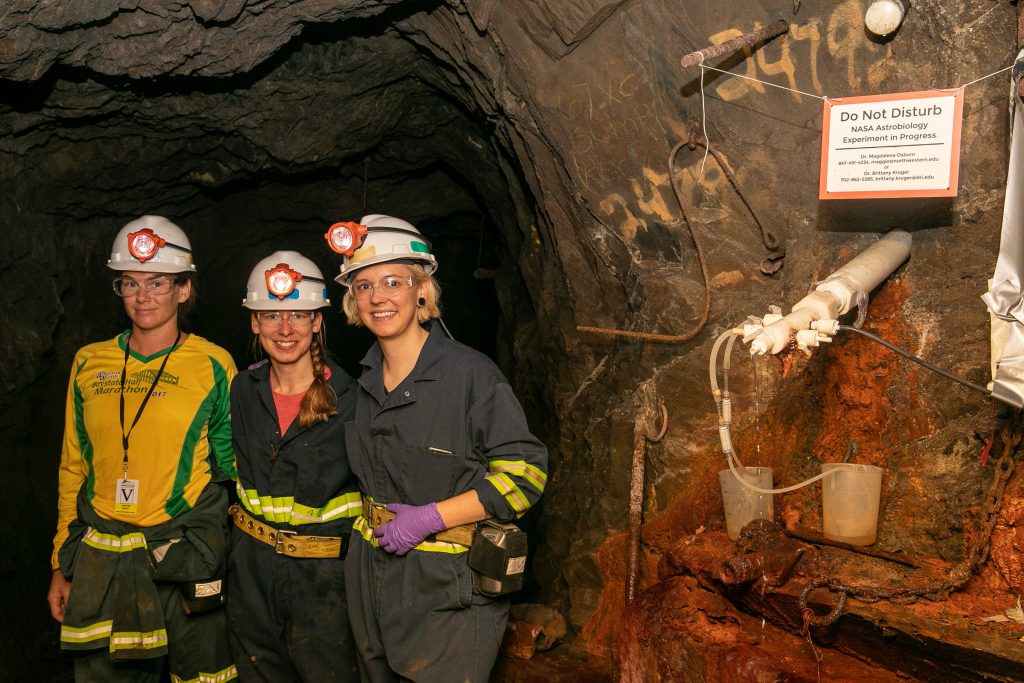
Now, researchers looking 5000 feet beneath the Earth in an old gold mine have discovered biofilms and other life living without light or oxygen. This former gold mine is part of the Sanford Underground Research Facility (SURF), located in Lead, South Dakota, and utilized the Deep Mine Microbial Observatory. In these environments where I never imagined life would be found, it turns out that different kinds of minerals are capable of providing the nutrients microbes need.
According to the project lead, Caitlin Casar: Our results demonstrate the strong spatial dependence of biofilm colonization on minerals in rock surfaces. We think that this spatial dependence is due to microbes getting their energy from the minerals they colonize.
These results show that biofilms can meaningfully contribute to the global nutrient cycles. Casar goes on to add that these biofilms, and I quote, “have astrobiological implications as these findings provide insight into biomass distributions in a Mars analog system.”
While Casar and her team explore beneath the Earth, researchers like Tanja Bosak are building on these results to search on the surface of Mars. The Perseverance rover carries 43 sample tubes, and it is hoped that sometime around 2031 a second mission will be able to pick up these samples and return them to Earth for analysis we can’t do with the instruments on Percy. The trick is trying to find the 43 rocks most likely to tell the story of Mars’ past, possible life and today’s still-maybe possible life.
As a field geologist, Bosak is using Percy to do the work she does with her hands and tools on Earth. According to Bosak: We work to understand the chemical conditions under which microbes make certain minerals or fossilize in certain ways because that helps us understand and reconstruct what the environment was like.
She goes on to explain, regarding the Jezero crater, that: We have a habitable environment — we have a lake. We have all the sediments that are known to preserve the signs of life on Earth.
Now she just needs to find the rocks with those preserved signs, and we have to send a follow mission, and we have to wait more than a decade, but science is a long game and we can’t wait to learn what, in many years from now, we learn about Mars.
The timescales over which our universe changes are often vast and beyond what humans have been around long enough to witness. Galaxy collisions: billions of years. Star formation: hundreds of thousands of years. Humans: just not that long.

Sometimes, though, we get lucky. In 1054, a massive star in our galaxy exploded, forming a nebula and a pulsar. Today, we call this the Crab Nebula and the Crab Pulsar, and this system is one humans have gotten to watch across its entire evolution with increasing technological awesomeness. Today, this young system is giving us new insights into the energies pulsars are capable of throwing off.
These Manhattan Island-sized stars spin at hundreds to thousands of cycles a second, and while most of the time these dense neutron stars give off a steady stream of radio pulses, sometimes, instead of study pulses, they just throw out a giant radio pulse. In new research published in the journal Science, researchers led by Teruaki Enoto discuss how they looked at the Crab Pulsar simultaneously in radio and X-ray to see if these periodical giant radio pulses are tied to activity in other wavelengths of light.
And they are.
The Crab Nebula is always giving off some X-rays, but they observed that during the short-lived giant radio pulses, these X-rays increase somewhat. While this “increase somewhat” is cool but not entirely exciting on its own, the combined results of massive increases in radio brightness and minor increases in X-ray mean that the dead star increases tens to hundreds of times in total emitted energy during these events. This is significantly more – tens to hundreds of times more – energy than previously thought. These bursts are likely related to fast radio bursts that are coming from some not well-known source in galaxies too far away to resolve, and if we can better understand how the Crab Pulsar is misbehaving maybe we can figure out what is misbehaving on the other side of the visible universe.
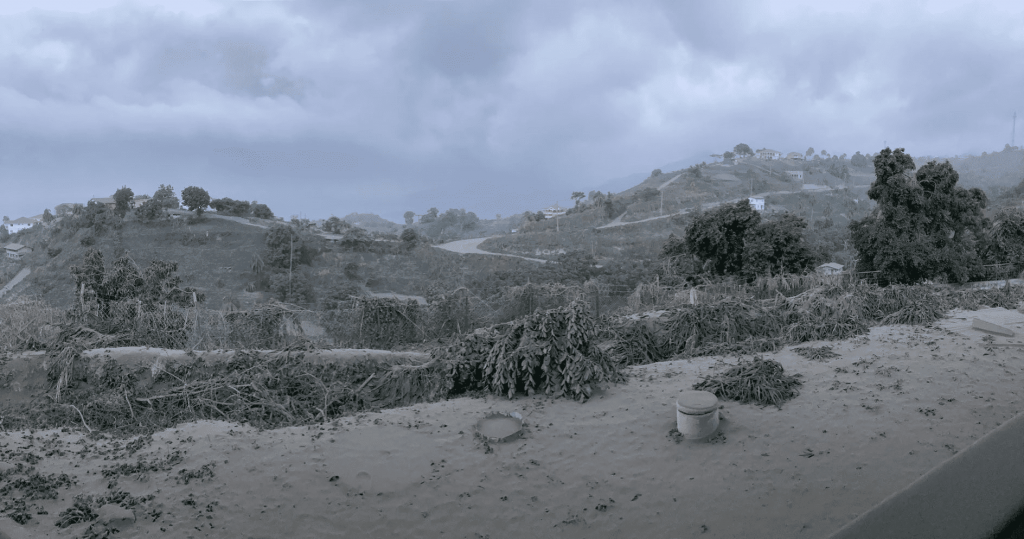
Last week a volcano on the eastern Caribbean island of St. Vincent erupted after hours of spewing ash and steam. The volcano,La Soufriere, which means “sulfur outlet” in French, hasn’t erupted since 1979. The first explosion shot a column of ash ten kilometers into the sky and, according to reports from local authorities, was followed by two subsequent explosions several hours later. Heavy ashfall was reported in communities around the volcano, with lighter ashfall observed on the nearby islands of Barbados, St. Lucia, and Grenada. Despite the explosive ash, seismologists reported that this was what’s called an effusive eruption, meaning lava steadily flows out of the volcano onto the ground.
As you probably know, this isn’t the only volcano that is erupting right now; there is also Fagradalsfjall in Iceland. However, these eruptions are quite different. The Icelandic volcanoes have lava that is flowing out the ground from several openings and filling up the valley they’re located in; so far, there haven’t been large ash clouds like there have been with La Soufriere.
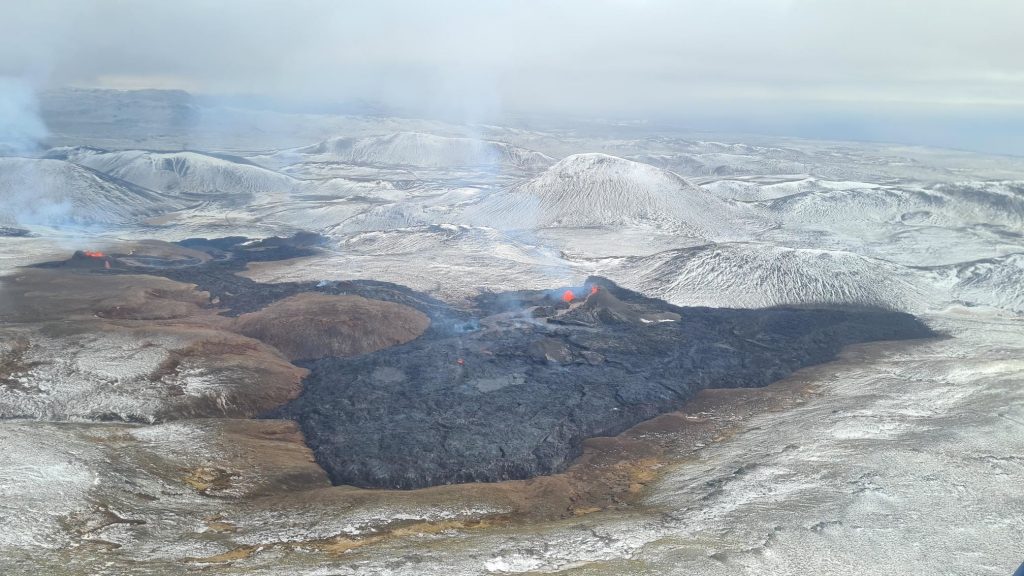
These are two very different types of volcanoes. Iceland is over a hot spot and a mid-ocean ridge, so the magma welling up is hotter and less full of solid minerals. It flows faster. Meanwhile, La Soufriere is created in a subduction arc of volcanoes, similar to Japan and Alaska’s Aleutian Islands. These volcanoes are created when plates are pushed down toward the mantle, heating up and melting the rock. Add in some water to lower the melting point, and you have magma that is cooler, very viscous, and full of crystals. Think of honey that has hardened a little. You have to warm it up to get it flowing again.
So while Icelandic volcanoes tend to be flowing and free, volcanic arc volcanoes have explosive eruptions as the partially solid magma backs up in the volcanic cones until the pressure behind the solid rock becomes high enough, due to all the escaping gas in the rising magma, and boom. Ash, rock, and lava all burst out, creating massive hazards for the surrounding communities. And that is why tourists are flocking to watch the lava flow in Iceland and being evacuated on St. Vincent. You can roast a hot dog over a gentle lava flow (do not try this at home despite what you may see on YouTube) but get far away from a mountain due to explode.
We hope that the communities on St. Vincent remain safe and receive the assistance they need to survive this latest eruption.
This has been the Daily Space.
Learn More
Nanosatellites Link Up to Understand Geomagnetic Field
- Skoltech press release
- “Tetrahedral satellite formation: Geomagnetic measurements exchange and interpolation,” Anton Afanasev, Mikhail Shavin, Anton Ivanov, and Dmitry Pritykin, 2021 May 15, Advances in Space Research
Five Potentially Habitable Binary Systems Found
- EurekAlert article
- “Circumbinary Habitable Zones in the Presence of a Giant Planet,” Nikolaos Georgakarakos, Siegfried Eggl, and Ian Dobbs-Dixon, 2021 April 15, Frontiers in Astronomy and Space Science
Identifying and Cataloging Galaxy Morphologies with Machine Learning
- University of Pennsylvania press release
- “Pushing automated morphological classifications to their limits with the Dark Energy Survey,” J Vega-Ferrero et al., 2021 March 2, Monthly Notices of the Royal Astronomical Society
Machine Learning Finds Quadruply Imaged Quasars
- Caltech press release
- “Gaia GraL: Gaia DR2 Gravitational Lens Systems. VI. Spectroscopic Confirmation and Modeling of Quadruply-Imaged Lensed Quasars,” D. Stern et al., to be published in The Astrophysical Journal (preprint on arxiv.org)
The Search for Intraterrestrial Life Succeeds
- Phys.org article
- “Rock-Hosted Subsurface Biofilms: Mineral Selectivity Drives Hotspots for Intraterrestrial Life,” Caitlin P. Casar, Brittany R. Kruger, and Magdalena R. Osburn, 2021 April 9, Frontiers in Microbiology
Radio Bursts Boosted by X-rays in Crab Nebula Observations
- NASA press release
- RIKEN Cluster for Pioneering Research press release
- “Enhanced x-ray emission coinciding with giant radio pulses from the Crab Pulsar,” Teruaki Enoto et al., 2021 April 9, Science
Iceland and St. Vincent Eruptions
- La Soufrière info page (Smithsonian)
- Fagradalsfjall info page (Volcano Discovery)
Credits
Written by Pamela Gay, Beth Johnson, and Gordon Dewis
Hosted by Pamela Gay and Beth Johnson
Audio and Video Editing by Ally Pelphrey
Content Editing by Beth Johnson
Intro and Outro music by Kevin MacLeod, https://incompetech.com/music/


 We record most shows live, on Twitch. Follow us today to get alerts when we go live.
We record most shows live, on Twitch. Follow us today to get alerts when we go live.